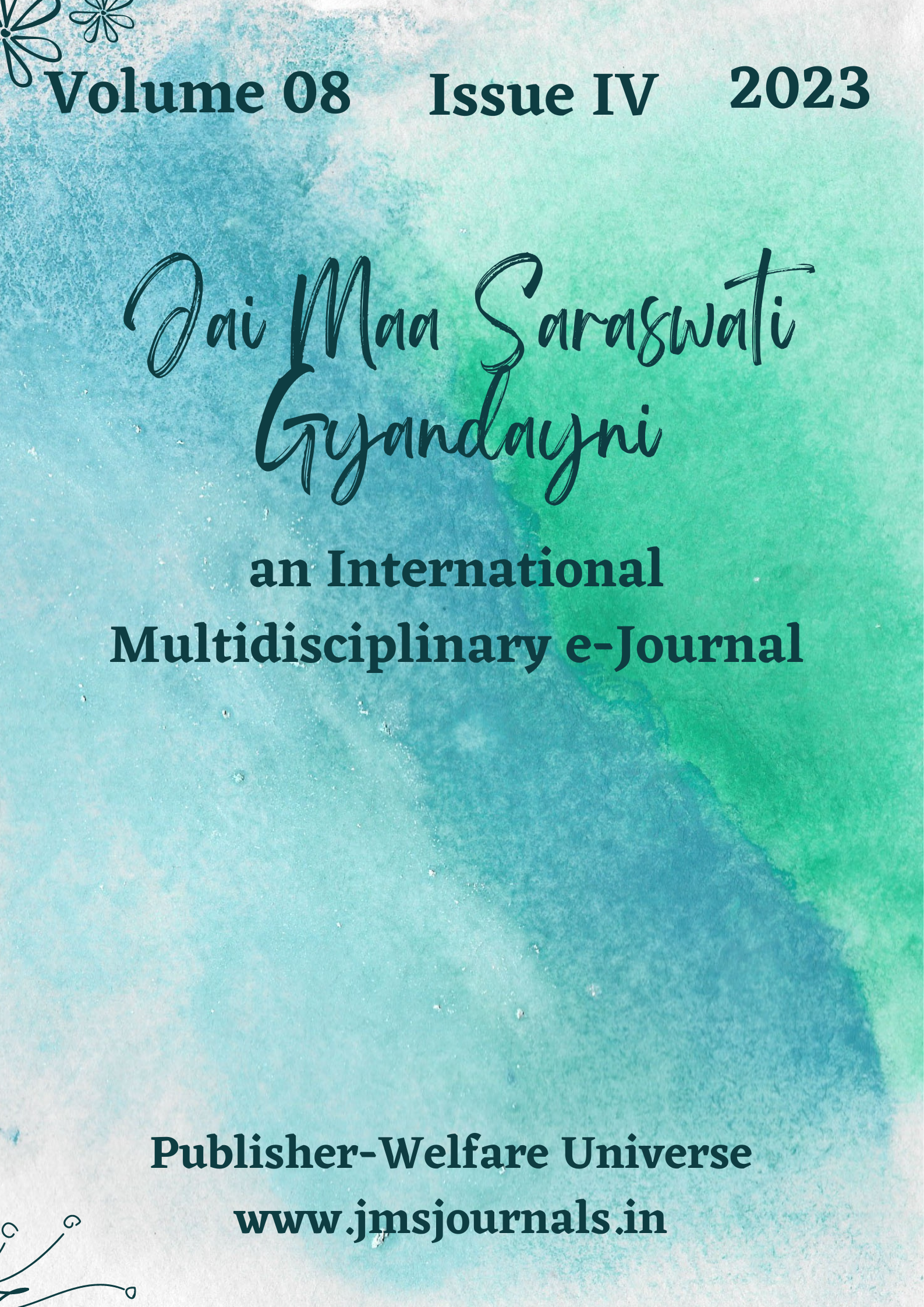Growth of Vaishnavism in India: A Historical Study
DOI:
https://doi.org/10.53724/jmsg/v8n4.02Keywords:
Vaishnavism, India, Vishnu, Krishna, Gupta Period, Sunga Dynasty, Kushana Dynasty, Religion, Dharma, Inscription, PillarsAbstract
India is a country with many religions. It has been the birth of many religions, like Hinduism, Buddhism, Jainism, and Sikhism. Hinduism is also called Sanatana Dharma. Bhagwat, Pashupat, Lingayat, etc. all religions are a part of Sanatana Dharma. Vaishnavism is a part of the Bhagwat religion. The Development of Vaishnavism in India begins in the ancient period. Vaishnavism in India is mentioned by Heliodorus, the Greek ambassador in Taxila during the Sunga Period. In the Besnagar inscription of Gautami Putra Satkarni in Madhya Pradesh, we find the mention of Vaishnavism on the Garuda Pillar. In the Kushana period also, we find mention of the development of Vaishnavism. Many Images and sculptures of the Kushana period related to Vaishnava stories are found in the Mathura region. Three different idols of Ekansha, Baldeva, and Vasudeva have been found in the Devghar village of the Nawada district of Bihar. Which are kept now in Patna Museum. Vaishnavism developed a lot in the Gupta period. The reign of the Gupta kings is famous for the progress of the Brahmin religion. An inscription has been received from Tosham village of Hisar district of Haryana, which begins with the praise of Lord Vasudev Vishnu. This is a Gupta carpet inscription. Thus, we see that the development of Vaishnavism in India has been happening since ancient times, and even at the present time there are a large number of followers of Vaishnavism in India.
Metrics
References
Grierson, sir George, Abraham, Linguistic Survey of India, 1908, Page No. 252
Ray, Choudhry Hemchandra, Prachin Bharat ka Rajnitik Itihas, kitab Mahal, Sarojini Nayadu Marg, Allahabad, 2006, Page no. 72
Ibid, Page no. 78
Sarkar, D.C., Selected Inscriptions wearing on the Indian History and Civilizations, Part-1, Kolkata University, 1942, Page no. 90-91.
Bhandarkar, R.G., Vaishnavism, Saivism and Minor Religious system, Bhandarkar Oriental research institute, Pune, 1982, Page no. 190
Banarje, J.N., The Development of Hindu Iconography, Munshi Ram Manohar Lal Publisher’s New Delhi, 1956, page no. 114-15.
Sarkar, D.C., 1960, Page 91-92.
Ibid, page no. 186-203, First line of the Inscription.
Ibid, page 171
Goswami, K.G., A study of Vaishnavism, Page No.9
Sarkar, D.C, 1960, Page 161-162
Banarje, J.N., 1956, page 161-163
Archaeological Survey of India- Annual Report, 1924, No. 22
Sahani, Dayaram, A Stone Sculpture Representing an incident from the life of Krishana, Archaeological Survey of India- Annual Report, 1924, No.1026-26, Page No. 183-84
Mathura Museum, CatLog no. 47
Agarwal, V.S., Studies in Indian Art, University Publication, Varanasi, 2004, Page No. 4-18
Bajpai, K.D., Indian Numismatic Studies, 1951 Page No. 25, 78-79, The No. of the above Idols in Mathura Museum respectively, 1010, 1025, 3550.
Joshi, P.N., Bulletin of the Museum and Archaeology in U.P. March 1964 Page No. 24-29
Gupta, Parmeshvari Lal, The Imperial Guptas, University Publication, Varanasi, 1974, Page No. 242
Pandey, Dr. V.K., Prachin Bhartiya Pratima avm Murti Vighan. Sharda Pustak Bhawan Allahabad, Page No. 56
Ibid, Page No. 57
Sculpture-21 See- Archaeological Survey of India, Sculpture-81, Table- 30.1
Epigraphy Indica, Sculpture 08, Nasik Cave Inscriptions, Sculpture-2, 4, 22, Henry Beveridge, A Comprehensive history of India Vol-II, Page No. 377
Epigraphy Indica, Sculpture 08, Nasik Cave Inscriptions, Sculpture-3
Lueders, List- Sculpture no. 1079, 1214, 1252, 1287, 1291
Archaeological Survey of India, 4-58
Ibid, Sculpture, 5-13, Row, 17-19
Marshal and Conov, Excavations at Sarnath, Archaeological Survey of India, 1907-08, Page No. 50, Banarje, J.N., The Development of Hindu Iconography, Page No. 192
Ibid, Sculpture no. 12, 19, 24, 25, 32, 35, 42 and 90
Agarwal, V.S., 2004, Page 8-13
Archaeological Survey of India,1960- Page No. 61-67, table 79A
Ibid, Page. No. 4-13 Table 127
Banarje, J.N., 1956, R.C. Majumdar, The Classical Age, Page 12
Vats, R.L. Archaeological Survey of India,1970, Page 11-18
Cunningham, Archaeological Survey of India,1971, Page 108-109
Sarkar, D.C, 1960, Page 341
R.C. Majumdar, Page 68
Kumaraswami, A.K., History of Indian and Indonesian Art. New York, 1965, Image No. 174
Sarkar, D.C, 1960, Page 260-62
Cunningham, Page 89, Table 25-26
Sarkar, D.C, 1960, Page 335-36
Champak Inscriptions of Parver Sen II, Row-13-14
Ganeshghar Plates of Dhruva Sen I,
Majumdar, R.C., Wakataka Gupta Age, Page 320
Corpus Inscription- 4, Page 184-86
Iconography in Dhaka Museum, Plate no 39
Tripathi, R.S., History of Kannauj: To the Moslem Conquest, Motilal Bnarsidas Publication, 1989, page 353.
Downloads
Published
How to Cite
Issue
Section
ARK
License

This work is licensed under a Creative Commons Attribution-NonCommercial 4.0 International License.













